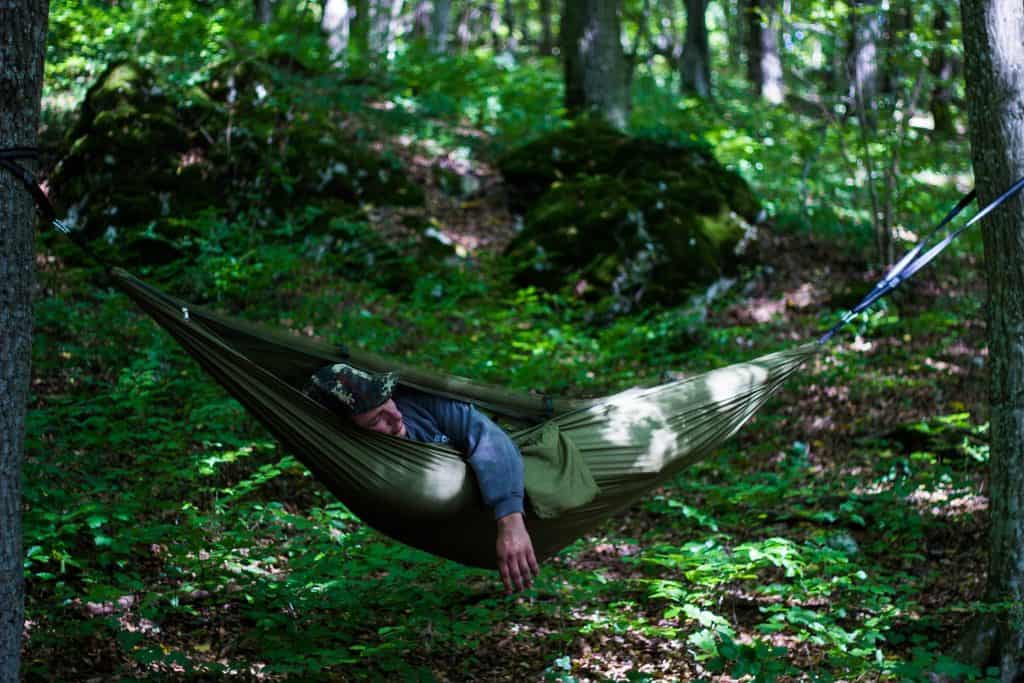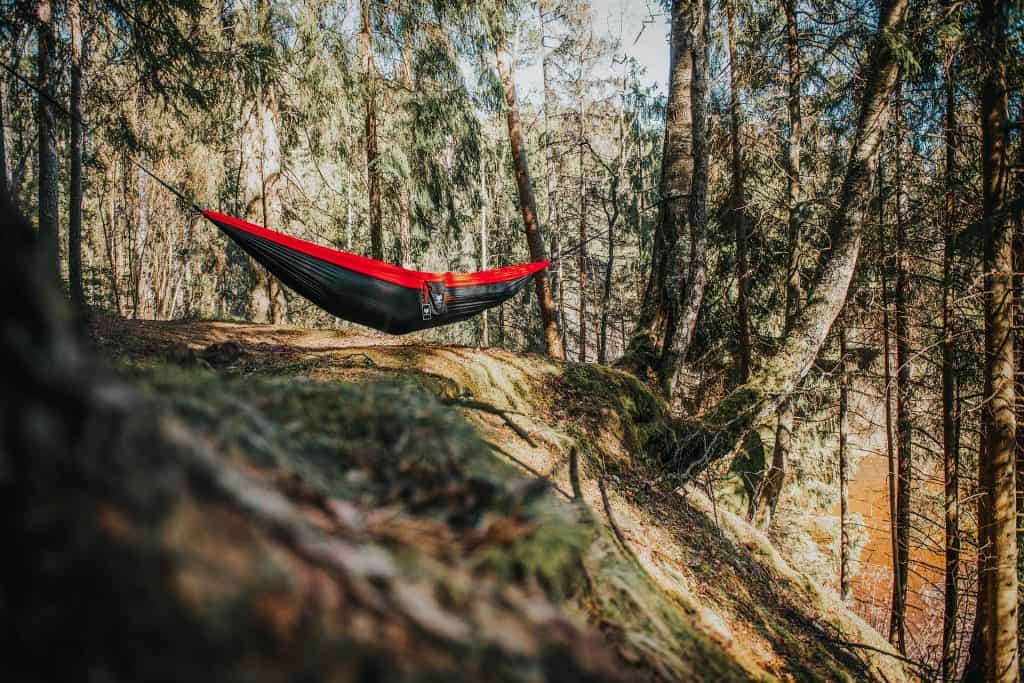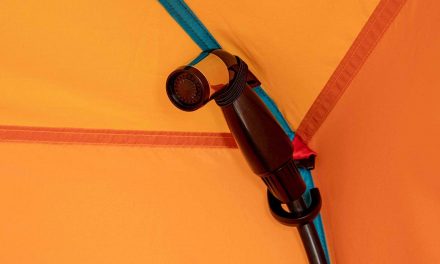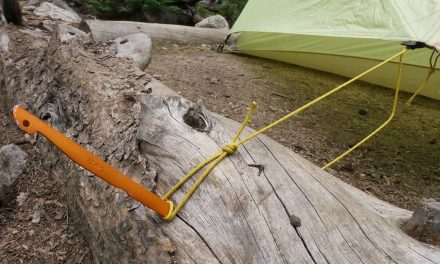When it comes to comfort in the outdoors, the hammock tent reigns supreme. With a hammock, gone are the days of struggling to find the perfect position on your flimsy sleeping pad. Instead, you can get a great night’s sleep blissfully suspended in between two trees, or even without trees!
Shh, Here Are Some Awesome Benefits
1. Easy to Use
Compared to tents, hammocks don’t require as much time to set up. The process is more like identifying two ideal trees and strapping each with an end of your hammock. You’ll be all set for your hammock camping experience.
Of course, there is a learning curve as with everything new. But once you get the hang of it, you’ll be setting up your temporary home in about two minutes for most hammocks on the market.
Packing it also tends to be straightforward since there are no stakes or poles to deal with.
2. Here’s to Flexibility
Tents usually demand specific grounds – somewhere level and away from any water body. And that means you might not always get your desired spot.
Things are a little different with hammock camping.
Hammocks are above the ground which gives you enough options as far as sites are concerned. You can build across some of the spots that aren’t ideal for a tent. As long as there are two ideal trees and you like the spot, you’re good to go.
3. Say Goodbye to Bugs
Well, not completely but to some extent at least. You won’t have to deal with all the pesky little things that are common in tents.
Some will still crawl up but their numbers will be far less than those you’ll have encountered if you were hanging out in a tent. You can put up protective measures to deal with these.
4. Less Baggage
Hammocks are generally light-weight and require far fewer tools to put up and you can choose what to string along depending on your needs (although this is not always the best idea). For instance, if you’re sure there will be no rain in your choice of the camping site, then you can leave behind the rain tarp.
The same goes for things like bugs. You can leave behind the bug net if you figure it won’t be needed.
That aside, hammocks also fit in most backpacks out there, so bringing them along doesn’t require much additional baggage.
5. Hammocks Cost Less
Now, there are quite some variations here with lots of price points – some even higher than some tents. It all boils down to your budget.
But that said, most hammocks are pretty affordable in comparison to tents. So you’re likely to pay less for hammock camping compared to a tent.
6. More Comfort With Hammock Camping
As already mentioned above, hammock camping means you’re sleeping several feet above the ground. That goes to say you’re free from any protruding roots, rocks, and general agents of discomfort that might escape your notice when setting up a tent.
That means you’re bound to be more comfortable and free from the common post-camping exhaustion. But just like setting up, sleeping in a hammock has a bit of a learning curve.
So don’t expect to get it right on the very first day of hammock camping. But you’ll definitely appreciate that bolstered comfort once you know what to do.

A Few Considerations When Hammock Camping
Hammock camping comes with a ton of goodies, no doubt – however, it’s important to have a few things nailed down to avoid a few unprecedented disappointments. Here are some of them.
1. Prepare for the Weather, Always
Hammocks by nature are open which leaves you as a camper exposed to extreme weather conditions, especially the rain. So it’s always best to prepare for the worst when you’re out there hammock camping.
While you might feel the need to leave behind add-ons like tarps to keep it light, you need to be ready for when the weather changes for the worst. A heated vest can also go a long way in keeping you warm.
2. Don’t Forget About Bugs
Being above ground gives you some edge when it comes to staying away from bugs. But that doesn’t mean you completely disregard a possible invasion.
Bring your bug net with you to keep those little nuisances away. Additionally, you can treat your hammock with a repellent for that extra proof.
You have to make sure bugs don’t ruin your hammock camping experience.
3. The Sleeping Position Matters
Sleeping in a hammock is different from sleeping on the ground. So you cannot expect to be comfortable maintaining the same sleeping position. You’ll end up with your body in a banana curve which isn’t a position you want if you’re looking for comfort.
Sleeping diagonally during hammock camping is the best way to achieve a flatter position. This shouldn’t be a problem if you’re camping alone.
4. Find the Perfect Hang for a Blissful Hammock Camping
A hang is an ultimate determinant of how comfortable you’ll be in the hammock. So it pays to figure this out as soon as you’re at your ideal camping spot.
And there is no one-fits-all hang. It will vary with aspects like weight and height.
A general rule is to balance it out – not too tight and not too saggy. You can adjust accordingly from here.
5. Consider the Correct Tree Setup
Trees are a significant part of hammock camping, so serious consideration in choosing the perfect pair is important.
Generally, you want trees that can fully support your weight without bending – it shouldn’t be hard to pick them out. Just make sure they aren’t the tallest in case lightning strikes.
Also, look around for any dead trees that might come crashing down. You want to stay away from those.

HOW TO CHOOSE A HAMMOCK TENT
With so many options on the market today, finding the right hammock tent can be tricky. So, here are some of the top things to consider when shopping around:
- Weight. One of the main benefits of a hammock is that they’re generally much lighter than a regular tent. While a backpacking tent might weigh upwards of 7lbs (3.2kg), a hammock might weigh half that. But, keep in mind, a hammock tent often comes with a rainfall, bug net, and suspension straps, which all add weight to your pack.
- Packed Size. Simply put, a compact hammock is easier to pack than a bulky one. So, if you’re often low on space in your pack, it’s best to choose a model with a small packed size.
- Sleeping Space. There are two schools of thought when it comes to sleeping in a hammock: diagonal or straight. Sleeping diagonally in a hammock provides much more support, but requires a larger product. Of course, this adds weight and bulk to your pack, so there is a trade-off here.
- Durability. No one likes to buy a piece of gear only to have it fall apart. However, camping gear durability is often a trade-off with weight since heavier materials tend to last longer.
- Mosquito Netting. Bugs are a bummer. So, many hammock tents will come with a built-in mosquito net to protect you from creepy crawlies while camping. These bug nets add a slight amount of weight and bulk to your hammock, but it’s probably worth it if you’re camping somewhere that’s particularly buggy.
- Price. While we all wish we had an unlimited budget to spend on gear, that’s just not the case for the vast majority of campers. So, the cost of a piece of gear like a hammock tent is always going to be a factor in your decision making. Keep in mind, though, that cheaper hammocks tend to be less durable than their more expensive cousins.
FREQUENTLY ASKED QUESTIONS
Here are our answers to some of your most frequently asked questions about hammock tents:
DO YOU NEED A SLEEPING BAG WITH A HAMMOCK?
There is no requirement that you use a sleeping bag when you sleep in a hammock. Rather, you can decide whether or not you need a sleeping bag based on the conditions. On hot summer nights, you can probably get away without using a sleeping bag. In these instances, a warm jacket might suffice.
For colder evenings, you’ll likely want to use a sleeping bag that’s rated to the conditions you’ll face. On very cold nights, you might even choose to use a hammock sleeping pad to keep your backside warm in addition to a sleeping bag.
CAN YOU SIDE SLEEP IN A HAMMOCK?
It is possible to side sleep in a hammock, but it isn’t very comfortable to do all night. Rather, most hammock campers will sleep predominately on their back. In fact, sleeping diagonally in a hammock is actually one of the best ways to get a good night’s sleep when suspended in the air.
By angling your body on the hammock, you can take advantage of the fabric’s natural tension. This provides more support for your back for a more comfortable experience so you can wake up feeling well-rested in the morning.
ARE HAMMOCKS WATERPROOF?
On its own, a hammock is not waterproof. But, many hammocks now come with rainflies that can keep you dry in wet weather. If you live somewhere that’s particularly rainy, it’s imperative that you have a tarp or rainfly for use with your hammock. Otherwise, you’ll be in for a wet and uncomfortable night in the rain.
Happy Hammock Camping!
If you’re looking to give hammock camping a try, you now have every reason to go ahead. You get an opportunity to fill in where tent camping comes up short.
Just be sure to follow a few tips above for that blissful experience.
- Hammock Benefits: What The Tent Industry Doesn’t Want You Knowing - November 19, 2022
- How I Maintain My Hygiene When Camping - November 19, 2022
- How to Survive a Meet & Greet with a Bear - November 18, 2022






